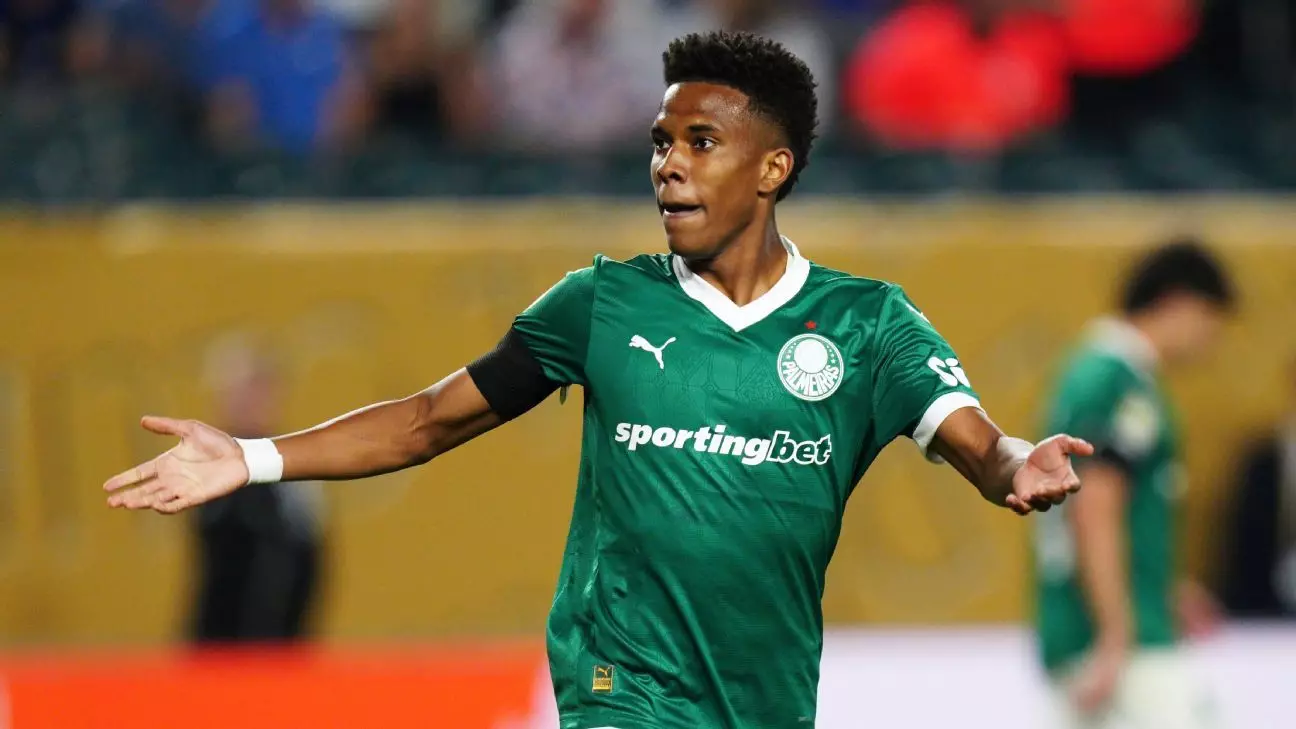In the ever-evolving landscape of football, the emergence of teenage prodigies captivates fans and experts alike. The recent standout performance of Estêvão Willian, a gifted 18-year-old forward from Palmeiras, exemplifies how raw talent combined with the right nurturing can shape the future of the sport. His performance against Chelsea, marked by a stunning goal that earned him Player of the Match honors, not only highlighted his individual brilliance but also signaled a new chapter in his promising career.
This young athlete’s journey underscores a broader truth: talent is only the starting point. Recognizing potential and providing the appropriate environment for growth are critical. Chelsea’s significant investment in Estêvão, amounting to over £33 million, reflects their faith in his abilities. However, acquiring talent is only the beginning; fostering an environment where he can thrive in a new country, league, and cultural setting is where the real challenge lies. It is a delicate balance between expectation and support, requiring patience and strategic guidance.
The Importance of Leadership and Mentorship
Estêvão’s transfer is surrounded by wise insights from Palmeiras’ coach, Abel Ferreira, who emphasizes the importance of mentorship in nurturing young athletes. Ferreira’s counsel to Chelsea concerning the young star revolves around care and patience. His words serve as a reminder that young players, especially at just 18, require more than just technical instruction—they need psychological support, cultural acclimation, and a nurturing environment.
Ferreira’s advice highlights a vital psychological component: the transition from local hero to global asset is fraught with challenges, from adjusting to a different style of play to managing increased media scrutiny. His metaphor about the sun in England exemplifies the importance of setting realistic expectations and offering support akin to providing a protective shield. These insights call for clubs to take responsibility not solely for developing skills but for fostering mental resilience and emotional stability.
From Talent to Impact: The Role of Club Support
Chelsea’s willingness to invest heavily in Estêvão indicates a long-term vision beyond immediate results. Yet, the steep financial commitment must be matched with a comprehensive developmental plan. The club’s role extends beyond tactical deployment; it involves mentoring, cultural integration, and ensuring the young player’s holistic growth.
Maresca’s comment on the “perfect night” reflects an understanding of the significance of nurturing young talent in a competitive environment. When a player of Estêvão’s caliber impresses on a big stage, it resonates as a validation of their potential. Nonetheless, the reality is that young athletes often face periods of inconsistency and hardship. The true test for Chelsea will be their capacity to create an environment that not only harnesses Estêvão’s skill but also protects his confidence as he learns from inevitable mistakes.
The Challenge of Cultural and Environmental Adaptation
Detailed insights from Ferreira about the differences in climate and lifestyle between Brazil and England add a layer of realism to the narrative. Adapting to a new country involves more than just mastering a different style of football; it includes adjusting to a different climate, daily routines, and even subtle cultural nuances. Ferreira’s light-hearted remark about the sun underscores the importance of providing young players with guidance on everyday life, which can significantly influence their mental well-being and performance.
Chelsea must recognize that integrating an international youth star is a holistic process. Their support should encompass mental health services, cultural orientation, and family involvement to ease the transition. Without such comprehensive care, even the most talented players can struggle initially, risking burnout or disillusionment, which can stifle their potential.
The Future of Young Talent in Football
Estêvão Willian’s story exemplifies a broader pattern in modern football—clubs increasingly scout globally, investing in youth to secure competitive advantages in the future. While the allure of young, talented players is undeniable, their development hinges on a nuanced approach that prioritizes long-term nurturing over immediate results.
In a sport driven by fleeting success and instant gratification, the true challenge is creating structured pathways that allow young prospects to evolve naturally and sustainably. Estêvão’s journey will serve as a case study—whether he becomes a global superstar or not depends heavily on the mentorship, environment, and patience provided by clubs and coaches. If exploited correctly, his raw talent could transform into a legacy, not just for himself but for the philosophies that foster young talent worldwide.

